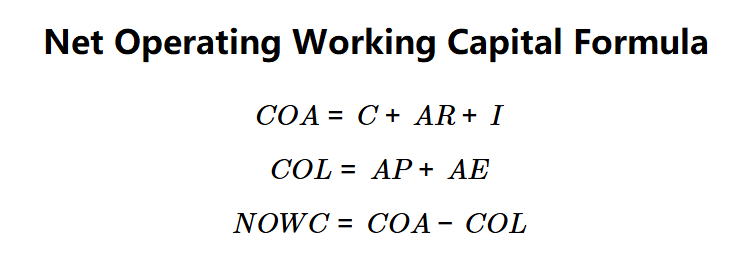 Home
Home
 Back
Back

Definition: This calculator computes the net operating working capital (\( NOWC \)), which represents the difference between a company's current operating assets and current operating liabilities, reflecting short-term operational funding needs.
Purpose: Helps businesses and investors assess the liquidity and operational efficiency of short-term assets and liabilities, excluding non-operating items.
The calculator follows a three-step process to compute \( NOWC \):
Formulas:
Steps:
Calculating \( NOWC \) is crucial for:
Example 1 (Company Alpha): \( C = \$1,000 \), \( AR = \$15,000 \), \( I = \$5,000 \), \( AP = \$18,000 \), \( AE = \$2,000 \):
A NOWC of $1,000 indicates a slight positive working capital for Company Alpha.
Example 2: \( C = \$5,000 \), \( AR = \$10,000 \), \( I = \$8,000 \), \( AP = \$12,000 \), \( AE = \$3,000 \):
A NOWC of $8,000 reflects a healthy operational liquidity buffer.
Example 3: \( C = \$2,000 \), \( AR = \$5,000 \), \( I = \$3,000 \), \( AP = \$7,000 \), \( AE = \$4,000 \):
A negative NOWC of -$1,000 indicates current liabilities exceed current assets, suggesting potential liquidity issues.
Q: What is net operating working capital?
A: Net operating working capital (\( NOWC \)) is the net amount of current assets minus current liabilities used in a company's core operations.
Q: Why exclude non-operating items?
A: Excluding non-operating items like excess cash or long-term debt focuses the calculation on operational liquidity needs.
Q: Can NOWC be negative?
A: Yes, a negative \( NOWC \) occurs when current operating liabilities exceed current operating assets, indicating potential short-term funding gaps.